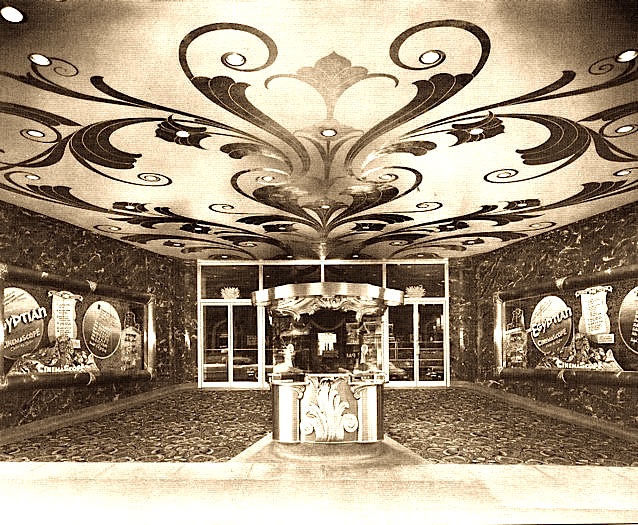How To Tell If You’ve Got Enough Stuff?
A sick breath exhaled from the shuttered old Fox Theater on Broadway.
You could smell it from the sidewalk.
It had a taste. Since any taste in the air is suspicious, it wasn’t good.
Portland Museum Boomer came to pick up historical theater stuff, like the brass labels above the drinking fountains telling who could drink the water.
They had racial segregation instructions and were already gone.
The box office sat apart, facing the street like a Hollywood bungalow, all kinds of special effects suggestions were carved into the wood covered window frames.
It was ultimate big theater stuff, so big a rigging company agreed to move the box office and the huge neon F-O-X sign looming above.
Even the Museum Boomer big stuff crew at the Oregon Historical Society had its limits, but there are ways.
Inside the building the theater bowl crawled with frantic action in the dim light.
People from around the city had permission to dismantle stuff before the wrecking ball started, but the clock was running. Their stuff was not going to a Stuff Hall of Fame, but it would survive.
Museum Boomer combed through the theater, climbed a wooden ladder for a gold leaf sun burst around a speaker, unbolted a row of red mohair rocking chairs from the floor seating, packed a couple of popcorn machines with ancient kernels.
None of it was too big, just creepy.
The silver screen behind the stage curtains was stretched over a steel frame like a vertical trampoline to bounce images into the audience.
Someone had already slashed it.
Behind the screen an enormous empty space trailed into darkness. Once your eyes adapted you could see rays of light in the ceiling holes where pigeons roosted on the edges.
Now and then a bird flew inside. They beat their wings trying to get out, finally tiring and finding for a place to land, settling on the floor if nothing else.
That’s when the rats got them. One of the guys unbolting chairs for a week saw it happen over and over.
Looking up from the main floor, steel rods holding a balcony poked through ceiling holes. On both sides of the theater a stairway led from the lobby to the landing of the balcony. One side had a door in the wall, the other didn’t.
A local architectural salvage guy volunteered to help move stuff. He said he knew historical value for the stuff in the building. He walked up the stairs with Museum Boomer, opened the door, and walked another flight into a forgotten era on the second balcony.
Should it be forgotten history? Of course not.
Instead of plush red mohair rockers like the second balcony, the blocked off third balcony had raw wooden plank benches with canvas over straw for padding.
Looking down, the holes for the steel support rods glowed red around the edges from the lower seats. The stage looked about an inch and a half wide.
The expert volunteer guided the way. They took theater stuff including bench seats and window frames out of the brick walls behind the false front on Broadway. They found play bills under the wooden seats, a treat as unexpected as the vanilla box in the burned house’s cupboard.
More than that, they found unfairness and segregation, the sort of thing that weighs on a city made for better stuff.
Museum Boomer called an Oregonian reporter who wrote about the old Fox Theater and some of the traveling acts.
The story was reprinted in the New York Times that Isadora Duncan had danced here. From one theater on Broadway to the city of the Broadway theater, the show went on.
The stuff of ideas and human endeavor, of achievement and dreams, lived in the theater stuff.
Adding to the bygone glamor, a Hollywood director of photography with local roots came to the Fox to take pictures. Eric Edwards loved old theaters and old theater stuff. He knew about the Fox and taking pictures was enough for him.
He didn’t need to touch anything since he was a master of capturing images. He knew the drill.
Our feelings about stuff identify us, what we carry in our mind and store in the garage.
Our world is made of objects, of stuff, things that draw us in and push us away.
We need to understand why and act on the deeper meaning.
Our stuff grows more important over time, and so do our feelings about it. Baby boomers are catching on as they age.
When we see stuff that affects us, we think of treasure.
When we hold stuff we treasure it unlocks questions of what it really means and where it really comes from. And we know the answers.
Your stuff is different than my stuff, but how we feel about it is the same. We treasure it.



